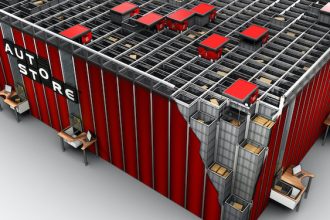Creating End to End Solutions

The future of maintenance is looking prescriptive.
It hasn’t been all that long since the typical approach to maintaining equipment involved a pen and paper. Maintenance staff would make the rounds, looking at equipment for any issues that might lead to trouble—vibration, pressure, temperature, and the like. They’d then return to the office, maybe open an Excel spreadsheet, and log their findings. Staff might repeat this sequence weekly or monthly, then rinse and repeat.
This information would make its way from one department to the next and the results would slowly work their way up the management ladder. The information provided no key performance indicators (KPIs), and companies often failed to get much of a return on investment (ROI) with this limited approach.
While some members of the maintenance staff might have enjoyed this “wild west” approach, it didn’t provide the best results. Plenty of hours were lost in downtime as the manual approach fell short in preventing the equipment from breaking down. Much better is a more modern approach where staff can capture usable data and analyze it. Today, end-to-end solutions via condition monitoring and software applications are optimizing equipment life cycles by predicting when and how the tools might break down.
Right now, most equipment maintenance is typically managed in a preventative maintenance approach, which is still a giant step up from the older, manual days. Think of your car: the electronics know how long it has been since you’ve completed a task, like an oil change or tire rotation, and will remind you when it’s time to get on top of it. The same holds true in equipment maintenance. Data is available in the suite of software that nudges your maintenance department on when to provide a maintenance task. This has led to much improved equipment reliability.
As software and equipment continue to evolve, however, the next frontier is predictive maintenance, an automated approach to monitoring and diagnosing your material handling equipment. Using collected data, analytics, and advanced machine learning techniques, you’ll be able to identify performance declines ahead of the game, preventing potential breakdowns and disruptions altogether. A predictive maintenance program charts performance trends using measurements like temperature, current, vibration and pressure. Taken as a whole, the maintenance team can get ahead of issues, intervening before it’s too late.
Moving into the future, prescriptive maintenance will be the name of the game. Instruments will gather data points and share them across the platform. Software will see an anomaly and know that there will be a problem in the future. The data will tell you that you must get ahead of it or suffer through downtime. This will allow your team to put a work order into the system and know that the pieces and parts are ordered and ready to use before there is an issue.
A decade ago, the maintenance team might have feared such technology and railed against it. Today, however, as the technology increasingly becomes the norm, those same employees have welcomed predictive and preventative maintenance programs. They will surely do the same when prescriptive maintenance becomes the norm.
For more information about the Solutions Community: mhi.org/solutions-community
For further articles from the Solutions Community:
Digitization of Intralogistics—Replenishment
Digitization Of Intralogistics: Labor
Digital Twin for Intralogistics
The Digitization of Intralogistics: Returns
Past vs. Future: The Difference Between On-Premise and Cloud-Based WMS
Sophisticated Condition Monitoring
Reduce Your Energy Consumption



